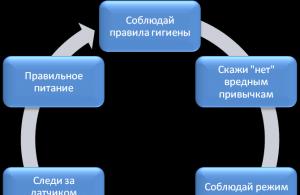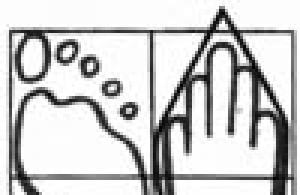The driver of the car must have with him:
- national driver's license for the right to drive a vehicle, issued by the official authority of the country of residence;
- registration documents valid in the country of registration of the vehicle (for cars, a vehicle registration certificate is sufficient);
- confirmation that the driver is authorized to drive the vehicle if it is registered under a different name (power of attorney), however, in practice they do not ask;
- annual technical inspection card (in practice they do not ask, but the Finnish police have the right to check the condition of the vehicle of any road user in the "field" conditions);
- vehicle liability insurance: Green Card or equivalent insurance valid in Finland. This insurance is sometimes asked, both at the entrance and at the exit from the country.
What is a "Green Card"?
"Green Card" - an international certificate of civil liability insurance of vehicle owners, an insurance policy, the form of which is made on green paper (hence the name).
Confirms the availability of compulsory third party liability insurance (OSAGO) in the territory of all countries included in the Green Card system. (In Russia, you can also buy insurance separately for Ukraine-Belarus-Moldova).
The "Green Card", issued by an authorized insurer in Russia, exempts from the need for additional civil liability insurance in another state.
The insurance contract is concluded for a period of 15 days to 1 year.
Countries of the Green Card System:
Austria, Albania, Andorra, Belarus, Belgium, Bulgaria, Bosnia-Herzegovina, Great Britain, Hungary, Germany, Greece, Denmark, Israel, Iran, Ireland, Iceland, Spain, Italy, Cyprus, Latvia, Lithuania, Luxembourg, Macedonia, Malta, Morocco, Moldova, Netherlands, Norway, Poland, Portugal, Romania, Serbia, Slovakia, Tunisia, Turkey, Ukraine, Finland, France, Croatia, Czech Republic, Montenegro, Switzerland, Sweden, Estonia.
The vehicle must be properly registered in the owner's country of residence and equipped with a license plate.
The vehicle must always have a stamped label with its factory number and, in addition, a manufacturer's tag, from which at least the name of the vehicle manufacturer, serial number, make and model of the vehicle can be found.
Do not forget also about the standard documents that are required for residents of non-Schengen countries:
– passport with a valid Schengen visa;
– medical insurance for all participants of the trip, valid in all Schengen countries.
Device and equipment of the vehicle
Tires and brakes
The tread height of summer car tires must be at least 1.6 mm, and for winter tires - at least 3 mm. Riding on tires with bare cord is not allowed. The simultaneous use of studded and non-studded tires in a vehicle is prohibited.
For the conditions for using winter tires, see the section.
The police monitor the state of the brakes of vehicles with a mobile dynamometer, which allows you to identify brake failures. The vehicle can be sent directly to the inspection station for inspection and determination of the technical condition.
Toning
Dimming of the windshield and front windows is allowed only within acceptable limits; the light transmission of the windshield must be at least 75% and the front side windows 70%. Many car manufacturers darken the windows to the maximum, but the windows look transparent. Additional shading, for example with a light protection film, is not allowed in Finland.
The most important rules of the road
Unless the road signs indicate otherwise, in built-up areas (the area bounded by the signs of a built-up area) vehicles are allowed to move at a speed of no more than 50 km/h, and outside them - 80 km/h. In many settlements, the speed limit is set at 30 or 10 km/h, shown by road signs.
In winter, a lower speed limit is set: on most roads, the maximum speed is reduced from 100 km/h to 80 km/h. On highways where the speed limit is 120 km/h in summer, the speed limit is limited to 100 km/h in winter. On some sections of the road there are electronic light displays indicating changes in the speed limit, depending on weather and climatic conditions.
For a car-dacha (auto-camper) the maximum speed is 80 km/h.
Speeding fine
Speeding limits in Finland are set as a percentage of the maximum limit. For exceeding the speed limit by no more than 10% of the speed limit in Finland, a fine is imposed as for a minor violation. For a serious violation, for example, for a significant, more than 20%, exceeding the permitted speed, a fine is imposed, the amount of which depends on the income of the driver. In addition, the driver loses his driver's license directly at the scene of the accident and cannot continue the journey by car. The police deliver the car to the nearest parking lot. A foreign driver is returned a driver's license only when leaving the country.
Fines are paid at the bank using a form issued by the police.
In Finland, not only the use, but also the possession of a radar detector is prohibited!
Overtaking is prohibited when approaching oncoming traffic. Finnish driving culture does not allow overtaking with the displacement of the overtaken or oncoming vehicle to the side of the road. For such overtaking, the police punish with a fine up to the deprivation of a driver's license.
Overtaking is also prohibited on slopes, curves or in close proximity to an intersection. You should not start overtaking if it is not possible to return to traffic without causing interference to other road users or if the car following you has already begun to overtake.
The headlights must be on when driving not only in the dark, but also in the daytime, regardless of weather or visibility conditions. This applies to both city and country driving.
Everyone must fasten their seat belt!
In passenger cars, the driver and all passengers must be fastened in both the front and rear seats. Children must either wear a suitable seat belt or be seated in a child safety seat.
Using a mobile phone while driving
The Finnish Parliament has passed a law according to which drivers who use a mobile phone without hands-free accessories while driving will be fined 50 euros from 1 January 2003. The ban also applies to the use of all telecommunications devices while driving, including radios, cassette recorders, CD players and televisions, if their regulation prevents the driver from concentrating on driving.
The driver of a power-driven vehicle is considered guilty of driving while intoxicated if the alcohol content in his blood is not less than 0.5 ppm. The limit of strong alcohol intoxication is 1.2 ppm. Police identify drunk drivers by forcing drivers passing by the checkpoint to blow into their pipes. A driver suspected of driving under the influence of alcohol is taken to a medical examination or to a police station to have his blood alcohol level checked with a high-resolution breathalyzer. Possible drug intoxication is controlled by a medical examination.
The violator's driver's license is subject to seizure and the offender is punished with imprisonment or a fine. Possible damage to the car while driving while intoxicated is not subject to compensation under insurance.
Stopping and parking of the car is allowed only on the right side of the road or street. On a one-way street, stopping and parking are also permitted on the left side of the street. The vehicle should be stopped or placed parallel to the road or street and as far as possible from its central axis. In this case, the vehicle must not endanger or obstruct traffic.
Stopping and parking is prohibited:
- in places of a break in the road profile and near turns;
- at the intersection and closer than 5 meters from the edge of the crossed carriageway;
- on the carriageway in two lanes (next to another car);
- in places where a standing vehicle makes it impossible to move or evacuate another vehicle;
- in a paid parking lot without payment;
- on the sidewalk, pedestrian crossing and at the intersection with the bike path, as well as closer than 5 meters from the edge of the pedestrian crossing or bike path;
- at the entrance to the building or at the gate, if the vehicle impedes the movement (entry or exit) of other vehicles or interferes with the movement of pedestrians;
- in passage under the roadbed (overpasses) or tunnels;
- on tram or railway tracks and at a distance of less than 30 meters from a railway crossing;
- in the presence of a yellow prohibition line, if the distance between the vehicle and the line is less than three meters;
- in the parking lot outside the marked place for the car;
- outside built-up areas on the carriageway, if the road is marked with a traffic sign "Main road".

Mandatory use of parking hours

In some settlements, the mandatory use of individual parking hours of the approved form has been introduced. The need to use such a clock is indicated on a road sign with a picture of a parking clock and an indication of the maximum allowed parking time.

The parking clock is a blue panel measuring 10x15 cm with a rotating disk. On one side of the clock is written "Parking start" in Finnish/Swedish. On the other, the rules for using parking hours are listed in detail. This watch (parkkikiekko) can be purchased at petrol stations and automotive stores.
The clock displays the start of parking (time of arrival at the parking lot), rounded up to the next even hour or half hour. The set arrival time cannot be changed..
The parking clock must be prominently displayed under the windshield (center or driver's side) so that it can be seen from the outside.
In cars registered abroad, it is allowed to use parking clocks accepted in other countries, which in appearance correspond to Finnish ones.
During parking, only one parking clock can be placed under the windshield.
Within the territory where the speed limit is not more than 60 km / h, the motorist is obliged to give way to the bus departing from the designated stop. Traffic rules oblige a bus leaving a stop to turn on a turn signal, but not always city buses do this.
Do not use the lane reserved for public transport
Within the city limits, driving on a public transport lane (buses and trams) marked with road signs is only allowed when the driver changes lanes for a turn.
Trams should be passed at intersections.
Slow down before crossing
The motorist is obliged to give way to pedestrians or cyclists who have entered the pedestrian crossing, as well as to give way to pedestrians and cyclists when turning right or left. In Finland, pedestrians cross the street at a crosswalk, believing that any motorist slows down and let them pass.
Accounting for all traffic violations
All violations of traffic rules in Finland are recorded in the register. A driver fined three times in one year for a traffic violation is banned from driving in Finland.
Gross or systematic violation of traffic rules and unpaid fines, along with a driving ban, may cause a refusal to issue a visa to enter the country.
Winter tires are a must in Finland!
On all cars from December to February winter tires must be used. This rule also applies to cars registered abroad. The use of winter tires at other times of the year is voluntary.
By law, the tread depth of winter tires must be at least 3 millimeters. New winter tires have a tread depth of 7–8 mm.
Tires with studded tires may be used from the beginning of November until the Monday following the week after Easter Monday ( end of April). They can be used at other times of the year, if required by weather and climatic conditions. The use of studded tires in conjunction with non-studded tires is not permitted.
The warning sign "Studded tyres" is not required in Finland.
Beware of icy and snowy roads
Winter driving conditions need to be tuned in advance. Excessive speed, sudden braking or accelerating, or turning the steering wheel too quickly when driving on icy roads can cause the vehicle to skid. Also keep a sufficient distance from the vehicle ahead.
The layer of ice on the pavement surface does not always stand out from the pavement. Black ice (the Finns call it "black ice") is often found, for example, in lowlands and on bridges. In such situations, even studded tires do not provide sufficient grip on the road surface. The zero temperature characteristic of Southern Finland contributes to the formation of slush on the road. Getting into the slush, the wheels of the vehicle lose their grip on the road surface.

What is written on the signs under the signs
|
Translation |
|
|
Pysakointi kielletty |
Stop prohibited |
|
Vain talon asukkaille |
For residents only |
|
Huoltoajo sallittu. |
Service traffic allowed |
|
Avoinna/suljettu |
Open/Closed |
|
During weekdays |
|
|
Sunday and holidays |
|
|
Mon-Tue-Wed-Thurs-Fri |
|
|
Age limit 24 |
|
|
Ilmainen/inaksullinen |
Free/paid |
|
Enter exit |
|
|
Miehet/naiset/lapset |
Men/women/children |
Emergency phone number - 112
In the event of an accident, the police, ambulance, doctor and fire brigade can be called on the single telephone number 112 throughout the country (dial without area code).
You can also call the police by direct dialing 10022. Both numbers can be called free of charge from any payphone. Road users are required to report an accident to the police if there are casualties in the accident or if the accident involved an elk.
Record the following information at the scene of the incident:
Registration numbers of involved vehicles/
Osallisten ajoneuvojen rekisterinumerot
Insurance companies where the involved vehicles are insured/
Osailisten ajoneuvojen liikennevakuutuisyhtiot
Names and surnames of owners/owners of involved vehicles/
Osallisten ajoneuvojen omistajan/ kuljettajan nimet
Surnames, addresses and phone numbers of witnesses to the accident /
Tapahtuman todistajien nimet, osoitteet ja puhelinnumerot
Please include this information when contacting the Motor Insurance Centre. If a Finnish vehicle is at fault for an accident (damage to a vehicle), the application is submitted to a Finnish insurance company.
Damaged car must be removed from the road
If the vehicle is left on the side of the road due to engine damage or for any other reason, then an emergency stop sign (“warning triangle”) must be installed on the road 150-250 meters behind the vehicle. In the dark, leave the side lights (backlight) on.
When towing one vehicle with another, the distance between them should be from three to six meters. The cable or tow bar must have a clearly visible flag. Towing a vehicle with a rope on a motorway is prohibited. When towing the machine, it is allowed to move at a speed not exceeding 60 km/h.
Information about towing services can be obtained from car repair shops, gas stations and in the phone book in the Latin letter "H" under the heading: "Hinausautoja". At the number 9800–35000, Rosqvist Oy provides services in Russian around the clock. This number can be called everywhere in Finland. Negotiations are sent to a person who speaks Russian.
References:
"Drive Properly on the Roads of Finland" (1996), published by the Ministry of Transport and Communications of Finland
"Peculiarities of national motoring part II" (2000)
Workshop (our travels):
April–May 2009
January 2008
May 2003
If you came to Finland by car, then of course you would do well to know the rules of the road in Finland. Everything seems to be the same here, but there are nuances. For example, Finns rarely break the rules, and serious violations are generally rare. Of course, this is not Japan or England and the traffic is on the right, like ours, but it will be nice if you know about the small differences that exist. Firstly, you yourself will be more comfortable, secondly, neat Finns will be more comfortable, and finally, you will not have conflicts with the police. In general, conflicts with the police in Finland are rare, but nevertheless ...
What are these nuances? It is clear that our rights apply in Finland, as the rules are almost the same. If you follow them, then there will be no problems, but be attentive to small differences. What is different in the rules of the road in Finland and Russia? These are, for example, the rules for moving along the arrow at a traffic light; priority rules when driving in roundabouts; of course, these are parking rules - wherever you go to the store or fishing or somewhere else - you will encounter this problem; the speed mode of movement both in the city and outside the city is also different. We will tell you about all the nuances to feel at home in Finland and not break the rules. Finland is not Russia, and the fines here are more serious and they have to be paid, especially since non-payment of the fine can affect the visa regime.
We decided to start with the speed limit because that's the first thing you'll encounter as soon as you cross the border - you have to drive at the right speed. Exceedings in Finland are punished very severely. No less tough than we have a drive into the oncoming lane, and even more serious. So here is the speed limit in Finland:
Well, what happens if you still exceed? In general, the size of the fine in Finland depends on the size of the salary, the presence of dependents in the offender's family (children, for example). In general, with a salary of 2000 Euros and an excess of 25 km / h, you can get a fine of something 300-400 Euros ... The minimum fine (for the unemployed and tourists) is about 120 Euros. It is better to pay for it if you already received it. Unlike a parking fine, this fine is a "federal" fine. Speeding is considered a criminal offense in Finland and such a fine will definitely not be lost and may further affect the visa regime. For example, if you do not pay or systematically violate, they will refuse to obtain a visa. By the way, exceeding more than 30 km/h may result in litigation.
What is considered an excess? It depends on who you fall for. If on camera, then there is a margin of about 20 km / h. But it's better not to risk it. If you are photographed on a camera, you will see a yellow flash that can spoil your mood on a trip ... If you are caught on the radar by the police (who, by the way, sometimes drive civilian cars), then the excess limit is less - within the error of the speedometer. Be careful! The police themselves do not catch on the road often, but systematically. The Finnish police are mostly impartial, but our tourists are often treated with suspicion, knowing our driving style. It's useless to argue with the police. Automatic cameras sometimes take pictures in warning mode. So if you are sure that you didn’t exceed and the camera took a picture of you, then don’t worry - you may get a warning: “you were driving 83 km / h when 80 is allowed” and no fines!

So follow the rules. Be especially careful in the city, where in addition to pedestrians there are many cyclists! They usually need to be skipped. They know it and they don't care if you know it!
And here is our broadcast about speed limits in Finland:
So good luck on the road. Follow the rules and you'll be fine.
Helsinki is closer to Petersburg than Moscow. And it is easier for our compatriots to decide on a trip to the Finnish lands than to Golden-domed - if there was a visa. But for many of us, the world on the other side of the border is shrouded in a veil of secrets and myths. We asked the consuls of Finland to comment on the most discussed rumors.

“Police watch Russian drivers more closely than local ones”
This MYTH. The legislation concerning participants and traffic rules in Finland has not changed. It's just that the police began to more strictly control the observance of this very legislation. And the police intervention threshold and fines are the same for citizens of Finland, the Schengen area, as well as for all other road users.

The only thing that has changed recently is the number of surveillance cameras. They are now not only in the hands of the police or on specially designated poles along the road, but also in equipped mobile minibuses. Moreover, if a corresponding road sign informs about the installed automatic cameras in advance, then no one will warn motorists that the police are controlling the speed from minibuses.
“For an animal knocked down on the roads in Finland, a serious punishment is due”
This MYTH. If your vehicle has become fatal for any animal, the Finns recommend stopping and not leaving it on the road.

Just take the carcass of the animal to the side of the road and move on. Except in those cases when it comes to a collision with a large animal. If, nevertheless, fate brought a deer or an elk with you, and your car was damaged, it is better to call the police at the general number 112 (without any additional codes). If you are not at fault in the accident, the Finnish side will not only not fine, but also compensate for the losses.

“It is a traffic violation in Finland to exceed the speed limit by 1 km/h”
This TRUTH. But when measuring speed, the police always reset 3 km as a technical error. So if, at a speed limit of 60 km/h, the radar "catches" you at a speed of 63 km/h, the police take away 3 km and do not write out a fine for exceeding. Serious monetary fines begin for exceeding the speed limit by 16 km/h, while the speed limit is up to 60 km/h. You can calculate your own fine on the website of the Finnish police: http://www.poliisi.fi/
“In order to understand what fine to write out, the Finnish police will take an interest in the salary of the driver”
This TRUTH. Finland has a differentiated system of fines. The higher your income, the greater the penalty. They have data on local drivers in their database, but the Russians have to take their word for it. However, if you exceeded the speed limit (limit up to 60 km/h) by 16-20 km/h, you will have to pay a fixed 115 euros. Regardless of monthly income.
If your excess is 25 km / h, and even at a permitted speed of more than 60 km / h, then the salary already matters. You get 1,000 euros a month - get ready to part with 168 euros, and if € 3,000 - minus already 630 euros. Further more.
But here you should know that the Finns are not as naive as it might seem. For this reason, when “remembering” your income, keep in mind that the police will not believe your “1000 euros per month” if your car costs €50,000…

No. 5 “You can’t enter Finland in a tinted car”
This TRUTH. Front windows must be light. The maximum that is allowed is light factory tinting. The Finnish consuls jokingly recommended that we have two cars: one for Russia, the second for trips around the EU countries ...

No. 6 "Seeing a Finnish policeman is a rarity"
This TRUTH. There are only 7,200 of them across the country, and not all of them work in the road patrol service. What to do: Finland is a small country.
No. 7 "Violation of traffic rules in Finland will not affect the receipt of the next Schengen visa"
This MYTH . Approximately half of the refusals (6,000 out of 12,000) in issuing a visa by the Consulate of Finland in St. Petersburg are related to violations of traffic rules by the applicant. If the police recorded overtaking in the wrong place or a serious speeding, the visa is denied.
Citizens of Finland for such violations are deprived of a driver's license. For minor violations, an administrative fine is issued, which, as a rule, does not lead to visa sanctions. If you have unpaid receipts, they must be paid before filing and then attached to the application.
But the Finns compensate for the lack of strength with a fair number of "iron policemen" - roadside radars with cameras.
Finnish traffic rules are not too different from those in force in the Russian Federation. However, there are significant fines for violations. Therefore, if you decide to travel by your own car, it is better to familiarize yourself with the traffic rules in Finland in advance in order to avoid unnecessary problems. Both the driver and the vehicle must be ready for the trip.
Requirements for the car and driver
If we talk about the driver of the vehicle, then he, first of all, must have a valid driver's license. In addition, it is mandatory to have documents for the car and, possibly, additional papers - for example, a power of attorney to drive a car if the driver is not its owner. If there are children or animals in the car, they must also have the appropriate papers on them.
Take care of the necessary equipment: there must be an emergency stop sign and a reflective vest. Children must be seated in special seats according to their age, and all passengers and the driver must wear seat belts.
When examining a foreigner's car before entering the country, Finns will not pay attention to rust, scratches and even dents on the car, they will not be interested in the year of its manufacture and in which country it was produced. However, if scratches or cracks are found on the windshield, such a car will not be allowed to be used on Finnish roads until the defect is fixed.
But most importantly, your vehicle should not pose a threat to people and the environment. For this reason, it is necessary to check in advance that it does not leak fuel, that the headlights, brakes, and steering are in good order.
Package of documents
When setting out on the road, the driver must take the following documents with him:
- Foreign passport with a valid visa. The document must be valid for at least 90 days after the end of the trip in Finland.
- Driver's license. It should be noted that Finnish border guards are quite satisfied with Russian rights. However, a temporary driving permit, which is issued in exchange for confiscated rights, is not valid in Finland.
- Certificate of registration of technical means. You don't need an inspection pass.
- "Green Card" - a policy of civil liability of the driver in the event of a road trip in the Schengen area. Without this document, you will not be able to enter the Schengen area. It is better to buy a policy in advance, but this can also be done on the way to the border in one of the offices of insurance companies, of which there are plenty. The most unprofitable option is to purchase a Green Card from a border guard: if you do not have a policy, in this case, buying it will cost you about 100 euros.
- Power of attorney for a car (for those who travel on someone else's vehicle).
If you are traveling to Finland with children, young travelers must also have passports and valid visas. If you are not the parent of the child, you must have a notarized power of attorney from his parents, allowing you to take the minor out of the Russian Federation.
To bring a pet into Finland, you need to have a veterinary passport with vaccinations and a certificate of breeding value.
Vehicle equipment
As noted above, the mandatory equipment of the car includes an emergency stop sign and a reflective vest. The driver or passenger is required to wear a vest if they get out of the car onto the roadway at night. The absence of these items does not mean that you will not be allowed into the country, but a fine may be imposed for this.

It is forbidden to use or even store a radar detector in a car. Storage means the presence of a radar detector in the vehicle even when it is turned off. Violation of this rule will result in a fine and confiscation of the device.
Having a first aid kit and a fire extinguisher is not mandatory in Finland. However, for your own safety, it is advisable to have these items.
In addition to a full tank, duty-free import of another 10 liters of gasoline in a canister is allowed.
Requirements for the technical condition of the machine
If everything is in order with the documentation, the car has the necessary equipment, you can proceed to the analysis of the vehicle itself. Many car enthusiasts are interested in whether rear window tinting is allowed in Finland. Yes, rear windows can be tinted, but cars with completely darkened windows will not be allowed into the country.
The windshield and front side windows must be fully visible - the light transmission of the windshield should not be less than 75%, and the front side windows - 70%.
The Finnish traffic police strictly monitors the condition of tires. From December 1st to March 1st, only studded tires are allowed when driving in Finland, and non-studded tires during the rest of the year. The tread height on studded tires must be at least 3 mm.
Because studded tires are destructive to the road surface, they are only approved for use in winter and in extreme weather conditions. Note that a tire sign warning that a driver is using studded tires is not required in Finland. The use of studded and non-studded tires at the same time is prohibited.
Basic rules of the road in Finland
In order to travel around Finland by car, you need to cross the border correctly. The Imatra checkpoint is a great opportunity for Russian tourists to quickly find themselves on Finnish territory. The checkpoint is located 43 km from the city of Lappeenranta, the distance to Helsinki is 265 km.
If the driver is alone in the car, it is not necessary to get out of the car by driving up to the window of the checkpoint. It is only necessary to turn off the engine and open the rear passenger window. Then you should hand over the documents to the border guard officer, if necessary, fulfill all his requirements and answer questions. Sometimes the driver may be asked to breathe into a tube to test for alcohol.
The length of the public road network in Finland is 78,162 km, of which 51,016 km are paved. Dirt roads in the country are also of high quality and quite suitable for a comfortable and safe ride. The length of highways is 863 km.

There are no toll roads in Finland, but they are all in excellent condition and have a high-quality surface. Country roads are no different from city roads. In winter, the roadbed is sprinkled with granite chips, which completely prevents the appearance of puddles and dirt.
E-18 is the best highway in Finland, which is used by thousands of tourists from St. Petersburg every year. One of its names is Royal Road. It was fixed due to the fact that for a long time decrees of kings, dispatches of officials and taxes for the king were carried along it. Two of its sections are even included in the list of museums.
For 700 years, the narrow primer has turned into a modern highway, along which entire cities have grown. The history of this road can be traced in the Vellamo Museum in Kotka. Today the route connects the east and west of Finland, and also runs through all of Norway and Sweden and continues even into Northern Ireland.
Road signs on Finnish roads are installed everywhere. You can get to the city you need even without a navigator, since there are signs on the roads with the road number, direction of movement, turns, names of various settlements and even objects located inside them.
There are practically no police on the roads, only sometimes its employees conduct anti-alcohol raids.
Webcams are installed on all roads, so when a violation is recorded, traffic police officers arrive at the scene immediately.
Photos taken in digital format are stored in the device's memory. In the picture you can see the vehicle, license plates, date, time and the driver, the passenger is darkened. If the violator's car is registered in another state, the picture is sent to the border, where the driver will have to pay the issued fine when leaving the country.
The main rules of the road in Finland include:
- the obligation to wear seat belts;
- use of dipped beam at any time of the day;
- use of fog lights only during fog, rain or snow;
- features of driving at a roundabout: drivers who enter a roundabout are required to let those who are already moving in a circle pass. When leaving a roundabout, you need to turn on the turn signal;
- a ban on using a mobile phone while driving (you can use a hands-free headset).
In addition, the driver is required to let buses that leave from the stop.
The allowed blood alcohol content is 0.5 ppm.
In Finland there is a special road sign "Beware of moose". These large animals often appear on the roadway. It is quite difficult to predict their behavior: moose walk in groups, and if you overtake one animal, several more may appear behind it.
To avoid a collision, you need to be careful, slow down in places where moose can appear, which is what the road sign warns about. If the animal has entered the road, it is impossible to signal - it is better to wait until the elk clears the way, or carefully go around it. In the event of a collision, be sure to call the emergency number 112.
There are quite a lot of free parking lots in Finland. However, you can park on many of them for a strictly limited time - there is always a sign next to it indicating the allowed number of minutes or hours. In this case, you will have to purchase a parking clock (their cost ranges from 1 to 3 euros), set the parking start time on it and place it under the windshield of your car. Return to the car should be no later than the designated time.
What can you get fined for?

If you break traffic rules, you can be fined in Finland just like in any other country. Car fines are quite high here, so it is better to travel around the country without violations. However, it is not always possible to foresee everything, so you should know what to expect if you violated the rules:
- For a radar detector installed on a car - 120 euros + confiscation of the device.
- If the seat belt is not fastened - 35 euros per person
- We drove through a red traffic light - 60 euros.
- Fines for speed violations are the most significant - the minimum amount is 120 euros. If you speed too much and do it too often, the next time you may be denied a visa or lose your driver's license.
- For the dipped beam not included - 50 euros.
- For ignoring the instructions of the road sign - 70 euros.
- Using a mobile phone while driving without a headset will cost 50 euros.
- For incorrect parking, they charge from 15 to 50 euros (the amount depends on the region).
- For wrong and dangerous overtaking - 85 euros.
- Not included turn signal - 50 euros.
- The child is not sitting in a special chair - 120 euros.
There are two types of fines in Finland: fixed (Rikesakko) and daily (Päiväsakko). In the second case, their number is determined by the severity of the violation, and the size is determined by the income level of the offender. For example, you can get up to 32 daily fines for speeding.
Payment of the fine must be made within a month and only through the bank.
What are the speed limits
Unless road signs show otherwise, the permitted speed of the vehicle in built-up areas is no more than 50 km/h, outside - 80 km/h.
In winter, a lower speed limit is set. The maximum speed is reduced from 100 km/h to 80 km/h.

On motorways where the speed limit is 120 km/h, in winter you can only accelerate to 100 km/h. On some sections of the road there are electronic light displays, which indicate changes in the speed limit, depending on weather conditions.
What to do in case of an accident
Any motorist can become a participant in a traffic accident. Therefore, every tourist who plans a trip to Finland by car should find out the rules for registering accidents in this country and learn how to behave in such a situation.
- Stop the vehicle and turn on the hazard warning lights. If necessary, evacuate passengers. Install an emergency stop sign.
- If there are victims, provide first aid, call an ambulance.
- Be sure to return to the scene of the accident. Do not move items related to the incident.
- Write down the names and phone numbers of witnesses and eyewitnesses to the accident.
- Record the make and number of the car with which the collision occurred.
- Call the police. You are required to present documents only to police officers.
- If this is your car, report the accident to the phone number indicated in the Green Card, if it is a rented car, call the numbers written in the rental agreement.
- Before the police arrive, exchange insurance details with the co-driver.
- Be sure to take part in drawing up a diagram and protocol of a traffic accident with a police officer.
- Write down the details of the police officer.
- Obtain a certificate from the police officer about participation in an accident. Be sure to check that your vehicle's damage record is correct.
If the car was rented, be sure to present at the rental point a certificate of participation in an accident and a completed notice of a traffic accident.
Results
The quality of the road surface in Finland makes it possible to comfortably travel around the country by car. Finnish traffic rules are very similar to Russian ones, and the biggest difference is the integrity of local traffic police officers: if you violate traffic rules, you won’t be able to avoid fines, but they are very significant here. However, such rules as fixing with a seat belt, using a mobile headset while driving and low beam during the day, as well as many others, are not difficult to implement. The main thing is to carefully follow the road signs, of which there are a lot in Finland, observe the speed limit, do not forget about moose that can jump out onto the road, and do everything possible to prevent accidents.
Speeding in Finland. And why the rich don't violate. Parking.: Video
If you want your car trips in Finland to be extremely positive, you must, among other things, follow the rules of the road in Finland. For strict observance of traffic rules will save you, for example, from unexpected communication with the traffic police, unexpected questions and misunderstandings at customs, or, worse, refusal to issue a Schengen visa when the Consulate of Finland considers your next visa application.
Finland has excellent roads and very calm, measured and comfortable traffic. In addition, the roads between cities and towns are quite free and it is not uncommon for you to travel completely alone. Especially in the evening or at night. And no, no, yes, and there is a temptation to drown a little, for example, the gas pedal ...
But no. I advise you to control yourself and not give in. In addition to the fact that, in principle, it is undesirable to break the rules anywhere, the sizes of fines in Finland are seriously different from Russian ones and can significantly shake up your vacation budget.
The rules of the road in Finland and the basic requirements that must be observed when traveling in Finland, I will give below.

The use of anti-radar is strictly prohibited
Even before the trip and crossing the Finnish border, turn off, remove from the car and hide the radar detector far away. This device is quite widespread in its native Fatherland, in Finland it is strictly forbidden to exist as a class and does not have the right to lie even in the glove compartment or in the trunk as a piece of luggage.
If they find it, they will take it away forever, and in return you will receive a fine. According to some poor fellows, for the right to bring and donate a radar detector to the Finnish customs officers, they contributed from 80 to 120 euros to the Finnish budget. If you believe the data indicated on the website of the Finnish police, at present the fine for anti-radar is at least 120 euros. In addition, the police use radar detectors and, in order to detect this prohibited device, they have the right to search not only your car, but also your personal search directly.
Speed limits on Finnish roads
Traffic in Finland is right-handed, the maximum speed limit on the motorway is up to 120 km / h.

The maximum speed limit in settlements and cities is 50 km/h. In some areas, you can find a speed limit of up to 30-40 km / h. In built-up areas, a maximum speed limit of 50 km/h is mandatory.

After the sign that cancels the effect of the sign "Settlement", if there are no other speed limits, the maximum permitted speed is 80 km / h.
But in general, there are a lot of signs that show the permitted permissible speed, so just be more careful.
Also remember that in Finland there are summer and winter speed limits (for example, on highways in winter, the speed limit is reduced from 120 km/h to 100 km/h and from 100 km/h to 80 km/h).

Speed control on Finnish roads
Speed control is carried out, among other things, with the help of automatic stationary road video recording systems, of which there are about a thousand units on the Finnish road network. About 3,350 kilometers of the road network are covered with video recording complexes.
Given that, as of 2019, the total length of paved roads in Finland is about 51,000 km, it turns out that speed control is carried out on less than 7% of the road network. In this regard, according to information on the Finnish police website (poliisi.fi), a significant increase in the number and length of control zones is planned in the coming years.
The zone of video control and automatic fixation of violations of the speed limit is indicated by the following road signs:

In 2017, 289,000 speeding violations were recorded on the roads of our northern neighbor, and 9 out of 10 fines were imposed according to the data recorded specifically by road video recording systems.

The average fine in 2017 was EUR 172.50.
What data is recorded by a traffic camera in Finland
The violation recorded by the video fixation complex is transmitted via a wireless communication channel. The photo captures your car, its state registration plate and driver's data. The picture is processed in such a way that the passenger sitting next to the driver is covered with a special filter.
In addition to road video recording systems and the police (the police measure speed without hiding at all), unremarkable cars without identification marks ply on the roads of Finland, in which unremarkable employees of the same police are sitting. So if you are suddenly overcome by the native spirit of drive, and a car with Finnish numbers accidentally attaches behind you, then it is very possible that this is not a "hot-brother-Finnish-guy" at all, but a stern servant of the law.
The traffic police controls the speed limit on the main roads. In settlements, this function is mainly assigned to the local police.
Speeding in Finland
When fixing the speed, a discount of 3 km / h is always made (i.e. they are subtracted from the speed recorded by the radar, since a discount is given for the possible error of the device). Whether you get a warning or a fine also depends on which section of the speed limit was violated.
Also remember that since October 2016, the speed limit has been lowered in Suomi. If the permitted speed is exceeded by 1-6 km/h, a warning is given. Exceeding the speed limit by 7 km / h entails a penalty in the form of a fine.
For example:
- if you are driving at a speed of 69 km/h in a speed limit zone 60 km/h, then the speed value will be 66km/h, the speed limit will be 6km/h and you will receive a warning
- if you are driving at a speed of 70 km/h in a speed limit zone 60 km/h, then the speed value will be 67 km/h, speeding will be 7 km/h and you will receive a fine
Fines for speeding in Finland
The structure of fines in Finland also differs from the Russian one. There is a so-called fixed penalty Rikesakko. This is a monetary fine in a fixed amount (in euros) for various offences. Depending on the violation, its size ranges from 20 euros to 200 euros.
In case of violation of the speed limit, a fixed fine Rikesakko applies only to violations not exceeding 20 km / h.
An example of fixed penalties:
- Violations related to vehicle documents - a fine of 40 euros
- Faulty equipment, improper technical condition of the vehicle - a fine of 70 euros
- If the driver or passengers are not wearing seat belts - a fine of 70 euros
- Speeding in an area with a speed limit of 60 km/h or less:
- Exceeding the speed limit up to 15 km / h - a fine of 170 euros
- Exceeding the speed limit in an area with a speed limit over 60 km/h:
- Exceeding the speed limit up to 15 km/h - a fine of 140 euros
- Exceeding the speed limit by more than 15 km / h, but not more than 20 km / h - a fine of 200 euros
- Exceeding the speed limit by 15 km/h (for a moped driver) - a fine of 100 euros
The fixed fine for a pedestrian for violating traffic rules is 20 euros.
If a fixed fine is charged for two or more violations at the same time, the amount payable is the amount of the fixed fine for the most serious violation plus 40 euros.
In case of serious violations for Finnish citizens, the monthly income is taken into account when calculating the fine, the number of dependents on maintenance and the amount of the fine increases very significantly. You can calculate the fine on the official website of the Finnish police.
In April 2013, Minister for the Environment Ville Niinistö (Member of the Finnish Parliament from the Green Union Party) received a large fine for speeding. Niinistö reports that he was driving at a speed of 139 km/h on a section of the road where you can drive at a speed of 100 km/h. The incident occurred in the town of Paimio on the Helsinki-Turku highway. The police gave Niinistö a fine of 1566 euros.
As it was also reported: "Ninistö is sorry about what happened..." (Source YLE.fi)
Of course, the minister's salary is apparently quite good, which was the reason for the above amount. But there is one more nuance - the minister was fined, which once again confirms to us the fair supremacy of the law over positions and privileges.
Fines for speeding for citizens of Russia
Unfortunately, there is an opinion that problems with speed violations should only concern the inhabitants of Finland. In this regard, I inform you that since May 2, 2012, police automatic photo radars that monitor compliance with the speed on the roads of Finland have begun to photograph foreign cars, the drivers of which, apparently, due to some of their own, purely internal convictions, exceed the speed limit.
Further, information from photoradar is transmitted to the border service and the Customs Department, and therefore penalties will be applied to Russian, in particular, violators of the speed limit in Finland, at the eastern border crossing point.
The fine will be kindly issued to you by the border guard on the basis of a police request for official assistance.
In addition, if you received a fine in Finland and did not pay it, then this fact may be taken into account by the employees of the Consulate of Finland, who will consider your (future) application for a Schengen visa in Finland. According to statistics, about half of the refusals in the subsequent receipt of a Schengen visa is associated precisely with gross violations of traffic rules by the applicant (of which the main one is speeding and overtaking in the wrong place)
Safe traffic in tunnels
When driving in tunnels, the following rules must be observed:
1. When driving in a tunnel, the dipped headlights must be turned on. Keep your distance, especially if the speed of the traffic slows down.
2. If suddenly the car's engine has stalled, then it is necessary to turn on the "emergency gang" and try to move the car to an emergency or technical pocket (or to the edge of the roadway) so as not to interfere with traffic. If necessary, you need to call the rescue service or the technical service using the emergency telephone, which are always installed in the tunnels.
Remember that in the tunnels it is forbidden to turn and reverse. It is also forbidden to run the engine in "idle" mode.
Seat belts
In cities and towns always give way to pedestrians who are either already at the pedestrian crossing or are just about to step on it. The Finns are always in full confidence that when approaching a pedestrian crossing, you have already slowed down in advance and will pass them without a doubt. The same applies to cyclists. Skip these two-wheeled mustang tamers. Of course, give way to both when turning left or right, including cyclists moving in the same direction as you.









